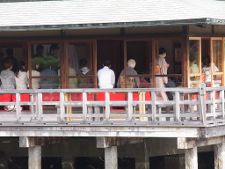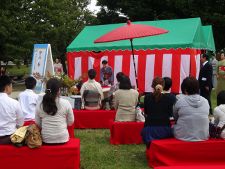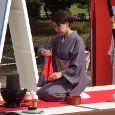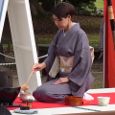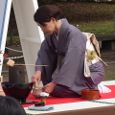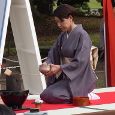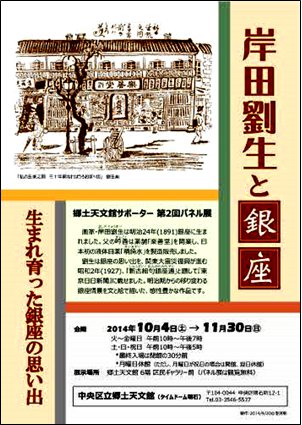Tea ceremony (Ochiyaya of Nakajima) Nodot (Nakano Bridge)
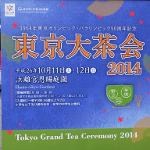 On October 11th and 12th, "Tokyo Daichakai 2014" was held at Hamarikyu Onshi Garden.
On October 11th and 12th, "Tokyo Daichakai 2014" was held at Hamarikyu Onshi Garden.
This event started in 2008 to make people who are not familiar with the tea ceremony feel free to enjoy the tea culture and tea ceremony.
One of the main programs of "Traditional WA Impressive from Tokyo", which conveys the appeal of traditional Japanese culture both domestically and internationally, is to introduce the culture of tea and the culture of Edo and Tokyo that has nurtured it.
This year marks the 50th anniversary of the 1964 Tokyo Olympic and Paralympic Games. In addition to three programs in the park, “Tea ceremony” (Ochiyaya in Nakajima), “Nodot” (Nakano Bridge), “Tea ceremony first experience” (Hanagien)”, a performance of Edo peddler, Edo Dai-Kagura, a stage event with a sumo jinku, Nihon Buyo and shakuhachi, a shakuhachi, a shakuhachi, and a shakuhachi, a shakuhachi, a stage event.
In the "Nodot" corner, in addition to the "Nodot" (3 seats in total) by the tea ceremony federations in Itabashi-ku, Kita-ku, and Chuo-ku, the "English Nodot" by the Meguro-ku Tea Ceremony Federation, and the Tokyo High School Cultural Federation Tea Ceremony Division "High school student field point" is organized.
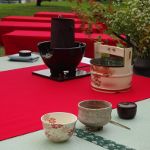 At the Nodot of the Chuo-ku Tea Ceremony Federation, listen to explanations of the differences between manners and others depending on the school, and listen to the story about the tea utensils on display after receiving them.
At the Nodot of the Chuo-ku Tea Ceremony Federation, listen to explanations of the differences between manners and others depending on the school, and listen to the story about the tea utensils on display after receiving them.
On the day, Omotesenke, Urasenke, and Yuuraku were taking turns.
The tea ceremony is a comprehensive art that pursues the ultimate beauty of scenery, tools, manners, etc., and is said to have a spirit of "motivation" at the root of a unique philosophy.
Under the autumn sky, it was a time to get a glimpse into a part of the deep tea ceremony world.
